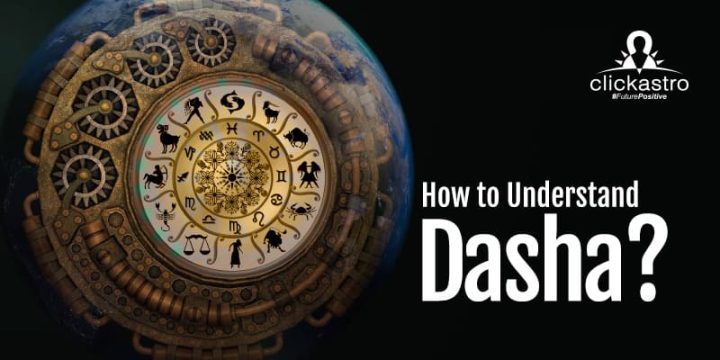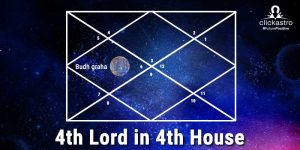The term “
Dasha” refers to a distinct time interval governed by a specific celestial body, deriving its roots from the Sanskrit language. Understanding the concept of Vimshottari Dasha requires a comprehensive understanding of the importance of individual dashas or planetary periods. These periods hold the key to predicting favourable or unfavourable times in the future, taking into account your Zodiac sign and the impact of the corresponding planet.
What is Vimshottari Dasha?
The Vimshottari Dasha is a very detailed and clear astrological system that is unparalleled in any other astrological tradition worldwide. It is credited to Rishi Parashaara, the sage believed to have recited the first Purana, the Vishnu Purana. Rishi Parashara’s lineage includes his son, Vyas Rishi, and his renowned grandson, Rishi Vashist.
Rishi Parashara is attributed with the development of forty-two Dasha systems. Dasha serves as a means to assess the impact of a specific planet governing a particular period on each Zodiac sign. One of these Dasha systems is known as the Vimshottari Dasha system.
There are various dasha systems like Jaimini Charadasa, Ashtottari, Yogini and Kalachakra dasa. Among all these dasas, Vimshottari is the king of all dasas.
Vimshottari, which means “120” in Sanskrit, is derived from the Vimshottari Dasha system. According to this system, the average human lifespan is considered to be 120 years.
Understanding Vimshottari Dasha
In relation to Vimshottari Dasha, it is believed that the average human lifespan, as calculated by this system, amounts to a total duration of 120 years. In almost all religious texts, 120 years is seen as the longest lifespan for humans. In Vimshottari dasha, the lifespan of 120 years is divided between each planet. Each planet is assigned a specific number of years within a human lifespan, as follows:
- Ketu: 7 years
- Venus: 20 years
- Sun: 6 years
- Moon: 10 years
- Mars: 7 years
- Rahu: 18 years
- Jupiter: 16 years
- Saturn: 19 years
- Mercury: 17 years
However, the reasons behind the allocation of different durations to each planet remain unknown. The calculated time is based on one solar year, equivalent to 365.25 days.
To simplify further, it is helpful to have a basic understanding of
Nakshatras as a whole. Nakshatras are 27 lunar mansions, and each occupies 13 degrees and 20 minutes within the 360-degree celestial orb. These 13 degrees are further divided into four sections, and each zodiac sign encompasses three Nakshatras.
For example, if your Moon Sign is Aries and your Nakshatra is
Ashwini, your Vimshottari Dasha would commence with Ketu and progress to Venus and so on.
The order of subdivision in the Dasha System is as follows:
Vimshottari Dasha > Antardasha > Pratyantar Dasha > Sookshma Dasha > Praanadasha > Dehadasha.
These subdivisions are part of the main Dasha.
Calculation of Vimshottari Dasha: To better understand the Mahadasha, it is important to comprehend how it is calculated based on the
planetary positions.
Let’s delve into the process of calculating Vimshottari Dasha more precisely.
If the Moon is placed in
Uttara Phalguni Nakshatra, then the person would experience the impacts of the Sun first, followed by the other planets in the order mentioned in the table.
The duration of the Dasha depends on the degree at which the Moon is positioned within a specific Nakshatra. The Nakshatra Lords are responsible for determining the Mahadasha period of a particular planet at the time of birth.
At the time of birth, if the Moon is entering a Nakshatra, the native would experience the full impact of the Dasha. However, if the Moon is leaving a Nakshatra at the time of birth, the native would feel the impact to a lesser extent and the Mahadasha period would be brief.
Every sign is 30 degrees and the expansion of every nakshatra is 00:00 to 13:20 degrees. If the Moon is at 00:00 degrees of any nakshatra, the native will get full dasa. If the Moon has advanced through the sign, the antardasa will be changing.
How to Predict Vimshottari Dasha?
There is a rule that helps in predicting the results and consequences of the Mahadasha. Let’s understand this rule to enhance the accuracy of Vimshottari Dasha prediction.
You can determine the auspicious or inauspicious impacts of a certain planet by understanding the
Lagna system.
For example, if your Lagna is Aries, then Saturn’s Mahadasha would be favourable for you. On the other hand, if your Lagna is Cancer, then Mercury’s Mahadasha is beneficial.
Thus, to determine if any Mahadasha would be beneficial for you, it is crucial to have a good understanding of your Lagna system.
Meaning and Impact of Each Mahadasha in Your Life: Now, let’s explore what each of the Vimshottari Mahadasha signifies and how it can impact your life.
1. Sun’s Mahadasha (6 years):
During Sun’s favourable periods, especially when it is placed in Trine, Kendra, or the 11th House, one can experience prosperity in various aspects of life. This period can bring name, fame, and fulfil all the necessary requirements.
2. Moon’s Mahadasha (10 years):
If the Moon is in a favourable position, such as in a trine, Kendra, or the 11th House, it can lead to prosperity since the Moon is also one of the Lagna. Vimshottari Dasha in a favourable position of the Moon can bring wealth and mental well-being.
3. Mars’s Mahadasha (7 years):
During Mars’s favourable periods, one can achieve victory over enemies and increase their capacity to fight back or struggle. It can make a person fearless and daring by nature.
4. Mercury’s Mahadasha (17 years):
When Mercury is favourable, it brings mental peace and happiness.
5. Jupiter’s Mahadasha (16 years):
During Jupiter’s period, individuals may find themselves becoming philosophers, yogis, advisers, or teachers.
6. Venus’s Mahadasha (20 years):
When Venus is well-placed, either in trine, Kendra, or the 11th House, individuals may excel in fields such as art, poetry, music, acting, and more.
7. Saturn’s Mahadasha (19 years):
Saturn’s Vimshottari Dasha can bring immense gains and recognition when it is favourable or strongly positioned in one’s horoscope, especially in the centre, trine, or 11th House.
8. Ketu’s Mahadasha (7 years):
Ketu signifies liberation or Moksha. When appropriately positioned, it can bring happiness and gains from various aspects of life. Favourable Ketu placements may result in the favour of authorities and the joy brought by children.
9. Rahu’s Mahadasha (18 years):
Rahu’s influence has been associated with sudden gains, such as power, wealth, recognition, and even opportunities for pilgrimages, when benefic.
The impact of every dasa is seen through the placement, aspect and conjunction of planets. In advanced astrology, the condition of planets in the divisional chart is also analysed to understand how the dasa is going to function. In addition to that, we need to check the yogas formed by the dasa lords.
Find the Benefic and Malefic Planets in Birth chart
Suppose if the dasa lord has
Neecha bhanga raja yoga, the native will get the benefits of that yoga during the dasa. If the dasa lord is a Kendra planet and is getting raja yoga, during that dasa, the native will enjoy the benefits of raja yoga. If the dasa lord is the owner of durstana house, ie, 6, 8, or 12th, the native will have struggles in life.
Other than Sun and Moon, all other planets rule 2 houses, so during the dasa of respective planets, the native will get the dasa of 2 houses. For example, for Aries lagna, Jupiter rules the 9th and the 12th houses, so during this dasa, the native will get the results of 9th and the 12th houses.








വളരെ നല്ല രീതിയിലുള്ള ത്
Other variant is possible also
It is remarkable, this amusing message